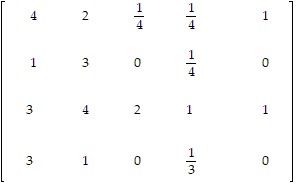Find the indicated intercept(s) of the graph of the function.y-intercept of f(x) = 
A. (0, 2)
B. 
C. 
D. 
Answer: D
You might also like to view...
Write the slope-intercept form of the equation for the line passing through the given pair of points.(10, -10) and (10, -1)
A. y = -10 B. -10x - 1y = 0 C. -1x - 10y = 0 D. x = 10
Determine whether or not one or more pairs of twin primes exist between the pair of numbers given. If so, identify the twin primes.4 and 15
A. No B. 5, 7 C. 5, 7 and 9, 11 D. 5, 7 and 11, 13
Solve the problem.Assume that the price per unit d of a certain item to the consumer is given by the equation  where x is the number of units in demand. The price per unit from the supplier is given by the equation
where x is the number of units in demand. The price per unit from the supplier is given by the equation  where x is the number of units supplied. Find the equilibrium price and the equilibrium quantity.
where x is the number of units supplied. Find the equilibrium price and the equilibrium quantity.
A. equilibrium price: $35 per unit; equilibrium quantity: 50 units B. equilibrium price: $50 per unit; equilibrium quantity: 30 units C. equilibrium price: $20 per unit; equilibrium quantity: 50 units D. equilibrium price: $30 per unit; equilibrium quantity: 50 units
Solve the problem.A bakery sells four main items: rolls, bread, cake, and pie. The amount of each of five ingredients (in cups, except for eggs) required to make a dozen rolls, a loaf of bread, a cake, or a pie is given by matrix A. Eggs Flour Sugar Shortening Milk src="https://sciemce.com/media/4/ppg__dsd0516192328__f1q103g4.jpg" style="vertical-align: -40.0px;" /> = BUse matrix multiplication to find a matrix giving the comparative cost per item for the two purchase options. Give each cost to the nearest cent.
 = AThe cost (in cents) per unit of ingredient when purchased in large lots or small lots is given in matrix B. Cost Large Lot Small Lot
= AThe cost (in cents) per unit of ingredient when purchased in large lots or small lots is given in matrix B. Cost Large Lot Small Lot 
A. 
B. 
C. 
D. These matrices cannot be multiplied.